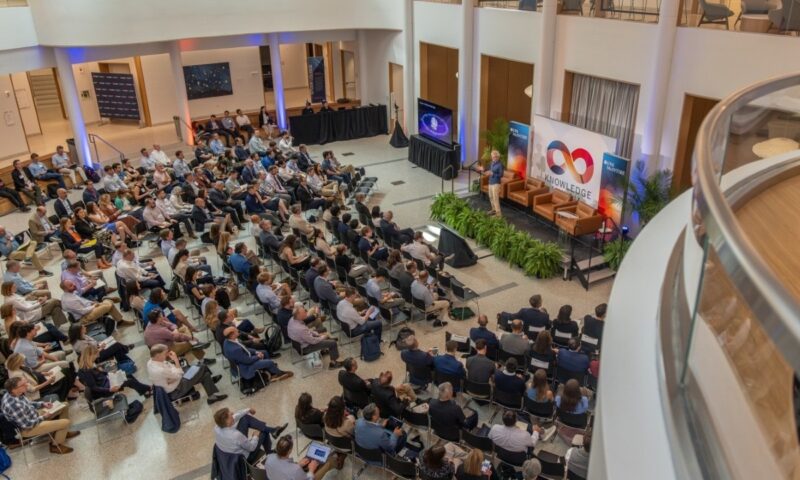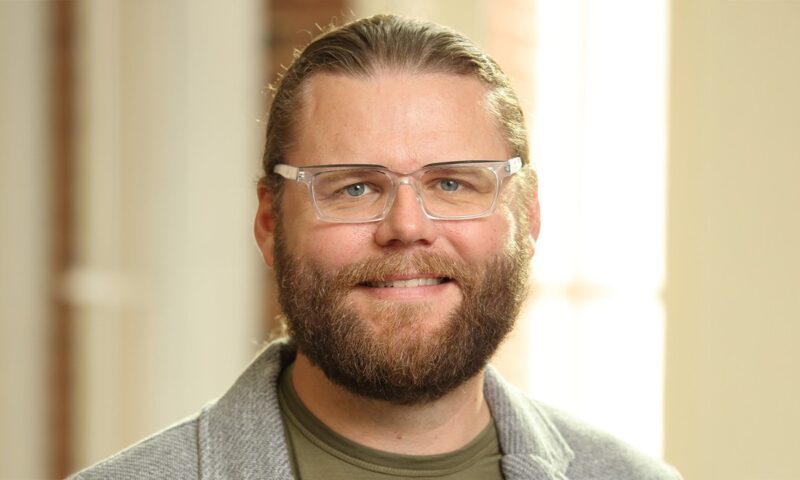H. G. Wells perhaps said it best: “Adapt or perish, now as ever, is nature’s inexorable imperative.”
In a compelling presentation recently to McIntire’s M.S. in MIT students, retired four-star General Stanley McChrystal offered his unique, first-person perspective on how the U.S. military transformed itself in order to successfully combat Al-Qaeda’s terrorist tactics in Iraq.
McChrystal is currently a Partner at the McChrystal Group, which he co-founded in 2011 to deliver innovative leadership solutions to American businesses and help them succeed in challenging and dynamic environments. In his latest book, New York Times bestseller Team of Teams, McChrystal and his co-authors outline how the challenges they faced in Iraq can be relevant to businesses, nonprofits, and other organizations.
The former Commander of the U.S. and International Security Assistance Forces (ISAF) Afghanistan and of the nation’s premier military counter-terrorism force, Joint Special Operations Command (JSOC) (September 2003 to February 2006), began his talk at the M.S. in MIT Program’s Northern Virginia location at Waterview Conference Center by describing his upbringing in the U.S. military culture.
Although this culture has many outstanding qualities, he said, “if you look up ‘U.S. Army’ in the dictionary, it’s not next to ‘innovation.’ The reality is that big organizations have a certain DNA to them, and innovation isn’t natural to something like the Army, and to a lot of other organizations.”
McChrystal then walked students through the 1981 genesis of JSOC after the United States’ failed attempt to rescue 52 American diplomats and citizens from Tehran, Iran, in 1980.
“[The mission] didn’t work because you’re trying to do something inherently complicated with groups that had never worked together,” he said, noting how Air Force aircraft carried Army commandos linking up with Navy helicopters flown by Marine pilots. “The four groups had never worked together before, so the seams literally came apart.”
The concept of JSOC was the “dream team idea,” McChrystal continued. “You get the best talent, provide tremendous resources to it, and get a tremendous outcome. And it’s generally right.” For its first two decades, McChrystal noted, JSOC enjoyed extraordinary success commanding special operations around the world until 2003, after the United States invaded Iraq.
“Regardless of what you think about [the U.S. invasion of Iraq] politically, operationally it looked pretty militarily straightforward—we’re going to go into Iraq, topple the government, deal with the armed forces, take the keys to the government out of Saddam Hussain’s hand, hand them to a new government, and then drive out,” he said. “Peace and security in the Middle East, right? Well, the military part of it was pretty straightforward and simple, but every other assumption about that was wrong.”
The months after the invasion of Iraq proved to be a test of the task force that had brought together the exquisitely trained Special Operations units from all branches of the U.S. military. In August and September 2003, McChrystal said, two terrorist attacks in Bagdad made it clear that U.S. and coalition forces were facing a professional cellular terrorist network operating inside a growing Iraq insurgency. Unlike terrorists groups before it, Al-Qaeda in Iraq was “constantly morphing, very flexible, lightning-fast, and quick-to-learn,” and used readily available commercial information technology “with stunning effectiveness.”
“Where Al-Qaeda was the original, Al-Qaeda in Iraq was 2.0,” said McChrystal, who arrived in Iraq in October 2003 after taking command of JSOC. He explained that Al-Qaeda in Iraq leveraged technology in a way no terrorist group had done before. “[This group] formed after the proliferation of information technology in everybody’s life,” he said. “When we first saw how they operated, it was so completely different than a traditional terrorist organization because they didn’t follow typical hierarchy. They operated through this network [with a] constant flow of information.”
In spite of U.S. and coalition force operations conducted by highly trained teams of combat veterans using night vision, unmanned aerial vehicles, precision weapons, and global positioning technology, the new terrorist group “just kept getting bigger and better.”
How could JSOC adapt to successfully combat this opponent and its new, and potent, way of operating?
“What we had to do is change, and this is the point at which I adopted a completely different mindset as a leader,” McChrystal said, noting that he pivoted from a decision maker approving countless operations to enabling an environment in which conversation occurs and then subordinates make decisions.
At first commanding an efficient hierarchy that used technology to move information through “the spans and layers” of the hierarchy more quickly, McChrystal connected the entire chain of command and decentralized decision-making authority.
“Our enemy is operating in this fluid way, so we connected the entire organization by videoconference,” he said, adding that 7,500 people met every day for 90 minutes, as well as communicated through 15 “chatrooms.” “It’s good to marinate in the information, but you use that information for your contextual understanding so that you can push information, resources, and support down to others so that they can operate.”
Developing extensive connectivity, McChrystal said, helped to overcome siloes that had formed between the elite Special Operations units of JSOC. “These capillaries that went everywhere were not only OK, it was expected,” he said. “There’s this conversation going across command, but there’s all these chatrooms pushing information. Everybody knew that the only score that mattered was whether we won the game. We didn’t care about anybody’s batting average, and we reiterated that every day.”
Sharing information at all levels using state-of-the-art technology—and then empowering subordinates down the chain of command to make decisions—ultimately increased the success rate of JSOC’s missions, McChrystal said. “That was a little counterintuitive to me,” he said. “I thought we’d make more mistakes and I’d just live with it. But what actually happened is that the people closer to the point of action know more, and if they’ve got complete authority to do what makes sense, they tend to do a pretty good job.”
“We are very grateful to Gen. McChrystal for sharing his insight and experiences managing and leading a very large organization in a changing and complex world,” said M.S. in MIT Program Director and IT Professor Stefano Grazioli. “He offers valuable lessons about how large organizations—as well as their leaders—must adapt and innovate to meet the demands of the situation at hand, as well as underscores the importance of the strategic implementation of information technology within organizations in order to remain competitive.”



